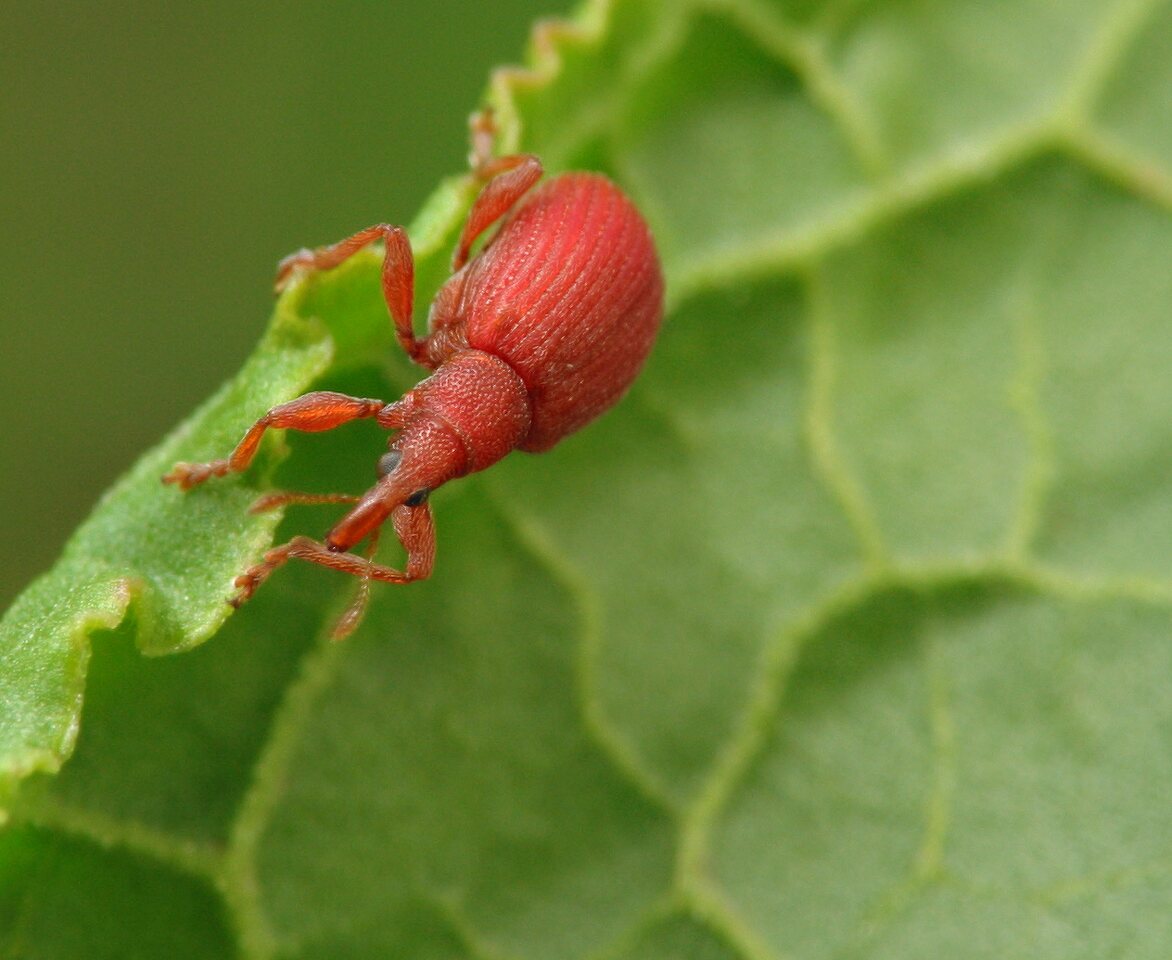
Apion frumentarium · rūgštyninis apionas
- Apion miniatum
- Mennigroter Ampfer-Spitzmausrüssler, Sauerampfer-Spitzmausrüssler
- rūgštyninis apionas
- menierode zuringspitsmuis, menierode spitssnuittor, zuringgalspitsmuisje
- pędruś czerwony
- rödspetsvivel
This species is generally common throughout Europe, except for the far north, southwest Asia and the Middle East. Host plants include various Rumex species and the beetles may be found wherever they occur e.g. parks, gardens, waste ground and agricultural margins etc. Adults occur year round but are most obvious from April to July when they are active both on the hosts and also dispersing; at this time they may be seen on umbel flowers. Winter is passed low down in the stems or under debris and in tussocks and they may become active during warm spells when they may feed underneath Rumex leaves. They are active from early spring when they may be seen crawling on bare soil, especially on arable margins, and begin feeding on young host foliage producing small shot holes. Mating occurs from April and continues over a long period, at least into July. Females chew small holes into the stems and petioles in which they lay a single egg and seal the damage with a secretion, the larvae develop within the petioles, stems and roots, sometimes producing swellings or discoloured lines of dead epidermis as they go. They have a relatively long development period; about a month or so and pass through three instars before pupating, this stage lasts for five or six days and new generation adults appear from late May or June. They spend some time feeding before leaving the host to find summer aestivating sites, appearing again in late summer and autumn to continue feeding before heading for overwintering sites.
2.5-4.5 mm. The sexes differ in the form of the rostrum; in the male it is broader, less curved, and duller beyond the antennal insertions, in the female narrower, more curved and more evenly shiny throughout. The eyes and claws are black, otherwise the entire beetle is red and the dorsal surface is clothed with sparse creamy-white pubescence.
‥
0 comments
Add a comment